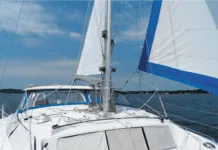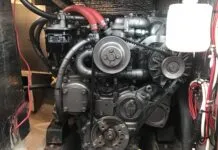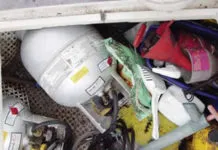Hose Fitting Tips
Pulling hoses is generally low on the fun list. They are in bad places, jammed onto crusty hose-fitting barbs, and have stiffened over the years. As part of our 2016 update on long-term tests, we needed to wiggle loose a few of the sanitation hoses were testing to see how they were looking on the inside-a job much less pleasant than new installation.
A Smart, Easy Way to Rewire
Running the wires for new electronics requires your best cursing vocabulary, lots of sweat, twisting body contortions, luck, and the occasional bandage. For tips on how to make this job easier, we turned to PS contributor Bill Bishop. A professional marine-electronics installer, Bishop has many ingenious ways to thread a wire from point A to point B.
How to Prioritize Projects on Your New-To-You Boat
There’s no better feeling then when you finally close the deal on your new boat and she arrives at the marina. You take pictures...
Plugged Through Hull Solution
My summer cruise took me up to the Discovery Islands just north of Desolation Sound off the coast of British Columbia with sailing buddy...
Small Wire Connections: Best Methods
Connecting two standard-size wires is pretty straightforward: Grab a ratchet crimper, adjust it to fit the crimp connector, strip the two wires to fit into the butt connector, slide the wires into the connector, and squeeze the crimper. The required materials are readily available: butt connectors for inline splices, ring connectors for terminal blocks, and a dab of anti-corrosive grease for the bolts and rings. Done right, these connections can survive some extremely tough conditions. In a recent test of anti-corrosion greases and connections, we demonstrated how these connections can last up to five years in the worst bilge conditions.
YouTube Sailing: Eight Videos Packed with Practical Knowledge
Editor's note: Practical Sailor entered the YouTube world in earnest a year ago, led by Editor-in-Chief Tim Labute, and the channel now has over...
Spring Inspection Checklist for Boats
Spring is here. Time to step back, put on your inspector hat, and approach the boat as an independent hired inspector would.
Conductive Greases vs. Corrosion
Many marine installations call for dielectric grease to seal out moisture and prevent oxidation at electrical connections. During the course of our multi-part reporting on greases, several readers asked if a conductive grease would be better for these connections. We have reviewed several conductive greases (see Marine Wiring: Are the Pricey Options Worth the Cost? Practical Sailor, December 2010), testing their ability to protect wires and terminals for extended periods in a salt spray chamber,…
Considering Fiber-Reinforced Composites for Sheathing
As we explore material legacies and evolution with a regenerative lens for our Wharram Narai Mk IV build, the focus now shifts to sheathing...
Seacocks for Thin Hulls
A proper below-the-water line sea cock consists of three parts: the outside portion or mushroom, which threads into the flanged valve, the flanged valve, and the backing plate.
















































